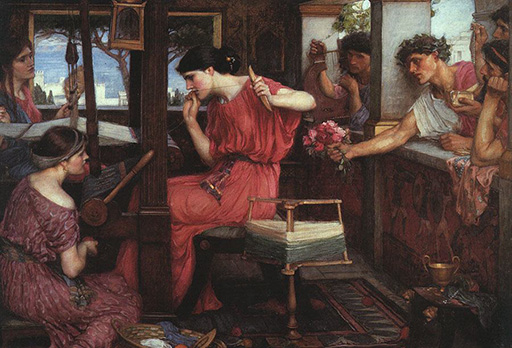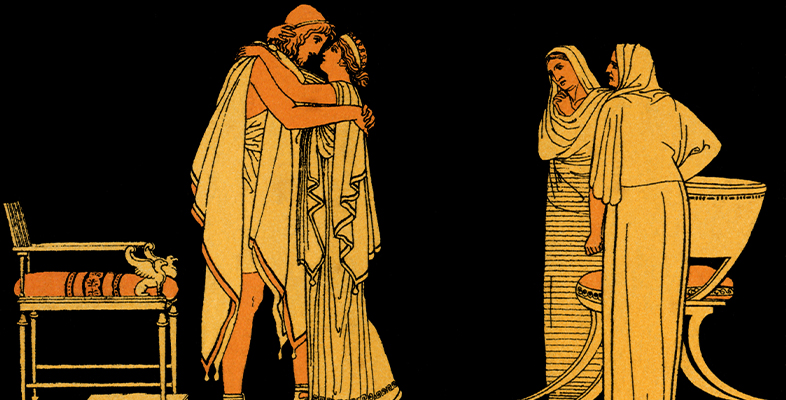3 Penelope and Odysseus
As you now know, much of the narrative of the Odyssey focuses on the story of Odysseus’ adventures while travelling home from Troy to Ithaca. He has been away for 20 years in total: ten years fighting at Troy, and ten years making his way back home, including a seven-year stay hosted by the alluring nymph Calypso on the island of Ogygia (there is a clear suggestion in this episode of the poem that he is unfaithful to Penelope).

You may also remember a little of Penelope’s story from the animation which you watched in Activity 1. When Odysseus left for Troy, Penelope remained behind in the palace on Ithaca, along with the couple’s son Telemachus, who was a baby when the war with Troy began. For 20 years she has had no way of knowing whether Odysseus is alive or dead, and whether he will ever return home. During this time, Penelope has been besieged by 108 suitors who have occupied the palace, vying for her hand in marriage in an attempt to get their hands on Odysseus’ land and his possessions, as well as his wife. These uninvited guests are inconsiderate and loutish, spending much of their time enjoying lavish feasts at the absent Odysseus’ expense. Penelope – famous for her faithfulness, and a match for her husband in cunning – has devised a clever ruse to delay having to marry one of them, in the hope that Odysseus will come home before she has to accept a marriage proposal from another man. She told the suitors that she would marry one of them only when she had finished weaving a burial shroud for Odysseus’ father, Laertes. By day she would weave the shroud, but each night she would unpick it in secret, thereby putting off the decision indefinitely (Figure 5). However, when the Odyssey opens, the suitors have discovered her scheme and so she cannot put off a new marriage much longer; it is becoming increasingly urgent that Odysseus makes it back home soon.
